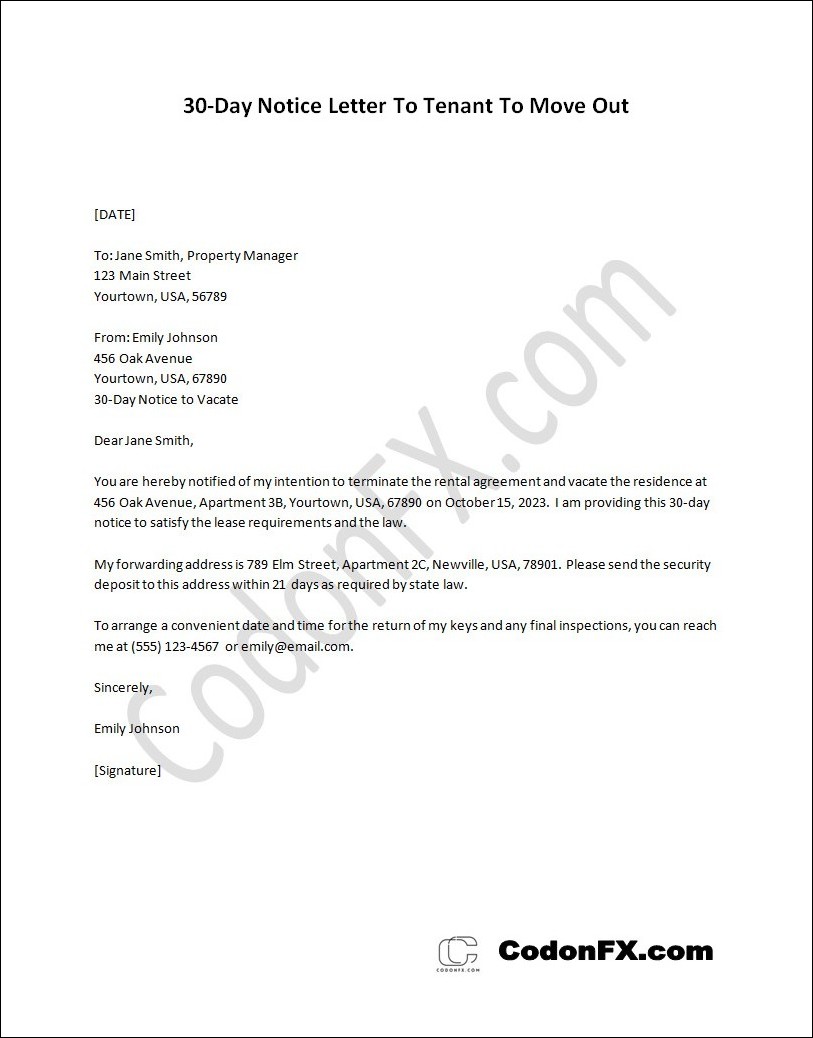
How do I inform my landlord I am intending to move out?
When the time comes to move out of a rental property, it is important to notify your landlord properly. Writing a notice letter to your landlord is the best way to formalize your intention to move out.
By providing a notice letter to your landlord, you can ensure a smooth transition and maintain a professional relationship.
How much notice do I need to provide before moving out?
In most cases, tenants are required to provide a notice of either 30 or 60 days before moving out, depending on the terms of the lease agreement. This notice period allows landlords enough time to find new tenants and make necessary arrangements.
It is advisable to review the lease agreement to determine the specific notice period required. Failing to provide the required notice may result in financial consequences, such as forfeiting the security deposit or being held responsible for additional rent.
Therefore, it is crucial to be aware of the notice period and adhere to it accordingly to ensure a smooth transition when moving out.
What is a 30-day notice letter to a tenant to move out?
A 30-day notice letter to a tenant to move out is a formal written document that informs the tenant about the landlord’s decision to terminate the tenancy agreement. It serves as a legal notification, indicating that the tenant has 30 days to vacate the rental property. This letter is typically used when the landlord wants to end the tenancy for various reasons, such as non-payment of rent, lease violation, or the need for personal use of the property.
The purpose of sending a 30-day notice letter is to provide both the landlord and tenant with a clear understanding of the termination date and allow for a smooth transition. Giving the tenant a sufficient amount of time to find alternative housing, helps minimize any potential conflicts or misunderstandings. Additionally, it ensures that the landlord complies with the legal requirements of providing notice before proceeding with eviction proceedings.
There are several benefits to using a 30-day notice letter.
- It establishes a written record of the landlord’s intention to terminate the tenancy, which can be crucial in case of any future disputes or legal actions.
- It provides the tenant with a reasonable timeframe to make necessary arrangements, reducing the chances of sudden eviction and potential financial hardship.
- It allows the landlord to start the process of finding a new tenant, ensuring a continuous flow of income and minimizing any financial loss.
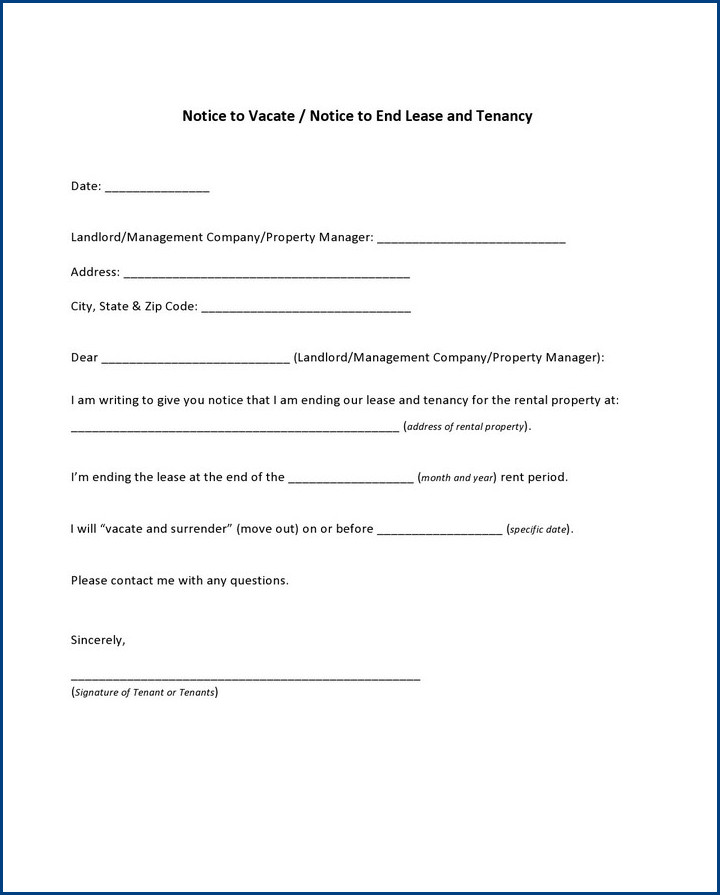
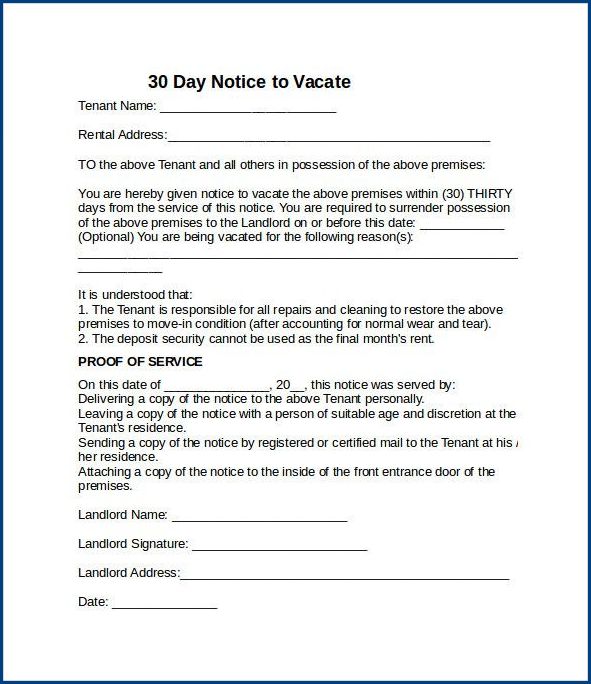
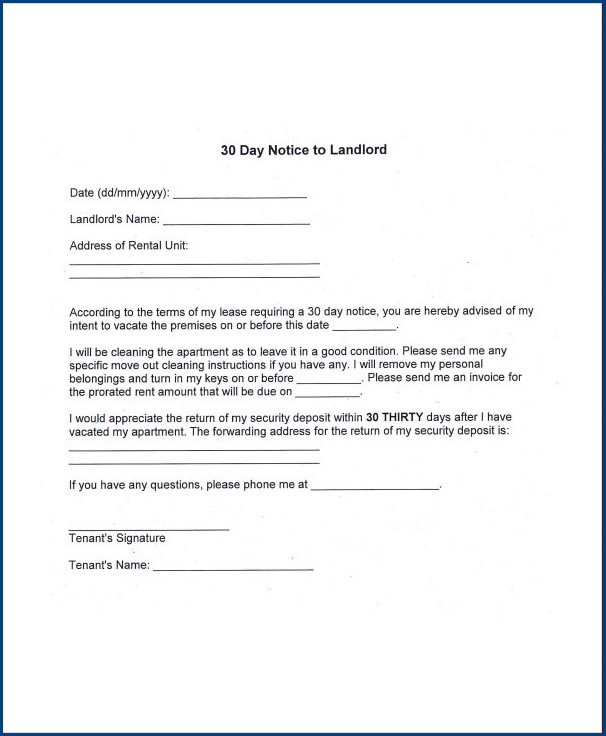
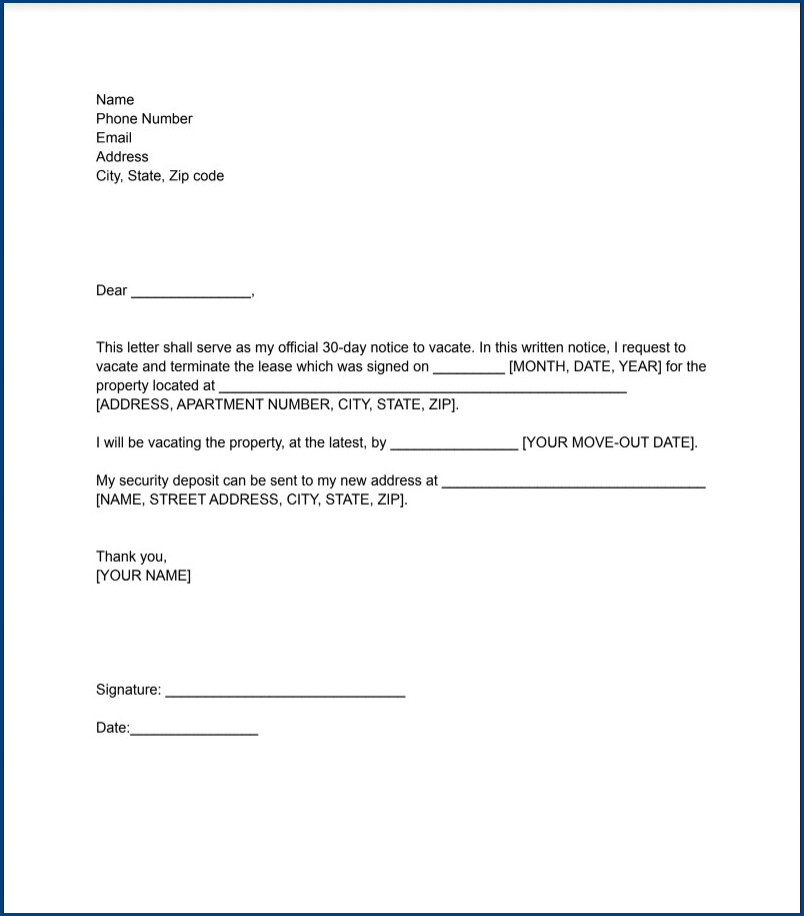
How do you write a letter to ask a tenant to move out?
Writing a letter to ask a tenant to move out requires a formal and professional tone. Here are some steps to consider when drafting this type of letter:
- Address the recipient: Begin the letter by addressing the tenant by their full name, as stated in the lease agreement. This helps to establish a formal tone and ensure that there is no confusion regarding the intended recipient of the letter.
- State the purpose: Clearly state the purpose of the letter, which is to ask the tenant to move out of the property. Be direct and concise in your wording to avoid any misunderstandings.
- Provide a reason: While it is not always necessary to provide a reason for asking a tenant to move out, it can be helpful in certain situations. If there are specific issues or violations of the lease agreement, it is important to mention them in a factual and objective manner.
- Include a deadline: Specify a reasonable deadline by which the tenant should vacate the premises. This allows them sufficient time to make the necessary arrangements and find a new place to live.
- Offer assistance: Depending on the circumstances, you may consider offering assistance to the tenant during the transition period. This could include providing references, offering to help with moving expenses, or any other form of support that you are willing and able to provide.
It is crucial to consult local laws and regulations and seek legal advice if necessary to ensure that the letter complies with all legal requirements. Remember to keep a copy of the letter for your records and send it via certified mail or another reliable method that provides proof of delivery.
By following these steps, you can write a well-crafted letter that effectively communicates your request for the tenant to move out while maintaining a professional and respectful tone.
30-Day Notice Letter Template To Tenant To Move Out | Word – Download